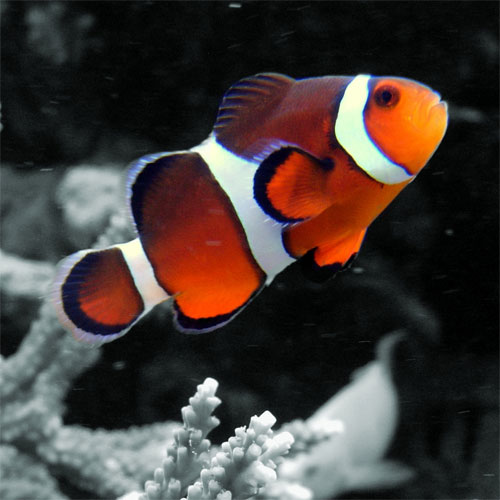Yes, virtually any aquarium can be converted to saltwater, as long as it doesn’t contain any parts that might rust like iron or steel. Glass and acrylic aquariums are the best for saltwater conversion but if you run an aquarium currently as freshwater, and want to convert it, you need to rehome the fish, strip it down, and start again. This is because saltwater aquariums use different substrate and decor materials, they colonize with different bacteria, and usually, they use different filtration equipment and lighting to a tropical or coldwater freshwater aquarium. Strip down, clean thoroughly and dry out any former freshwater aquariums or equipment that you want to use for saltwater, including filter media.
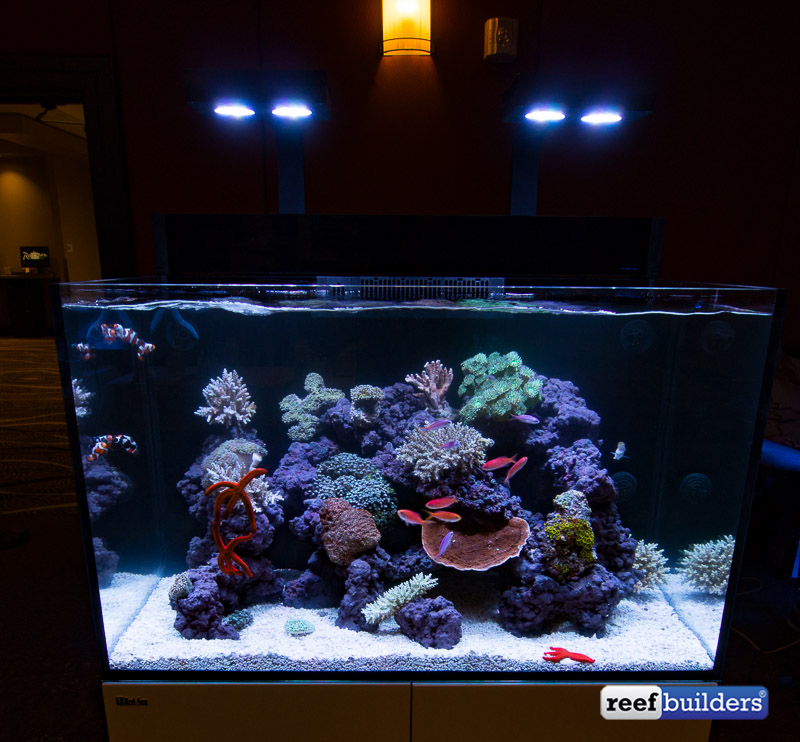
The two main types of marine tank
There are two main types of saltwater aquarium – fish-only, and reef. A fish-only marine tank has the same tropical saltwater as a reef tank, and maybe the same sand and rocks, but as the name suggests the only livestock you add to a fish-only tank are saltwater fish. No starfish, anemones, shrimp, crabs, or corals. A reef aquarium contains both fish and invertebrates, the main group of which are live corals, but with them, you can also house a myriad of critters and crustaceans like snails, crabs, shrimp, starfish, anemones, and corals. So if you just want to keep Nemo, a simple fish-only setup is the simplest and cheapest saltwater aquarium to set up, stock, and maintain. But if you want Nemo AND an anemone for him to live him, and you want all the beautiful colors and movement that real corals provide, you should plan for, and set up a reef tank. That’s the first decision.
Fish-only marine tanks
If you’ve kept freshwater fish before and want to take the plunge and set up a marine fish-only tank, many of the same rules apply. You’ll need a power filter that works both mechanically to trap fish waste and uneaten food, as well as biologically, to break down and convert the toxic ammonia produced by saltwater fish. You’ll need a filter, some live saltwater bacteria to kick -start that filter, and test kits to monitor ammonia, nitrite, and nitrate. Just like with a freshwater tank, aim for a consistent ammonia level of zero, nitrite zero, and nitrate below 40ppm. You can fishless cycle a fish-only tank with suitable bacteria and a bottle of ammonia, both available from good retailers.
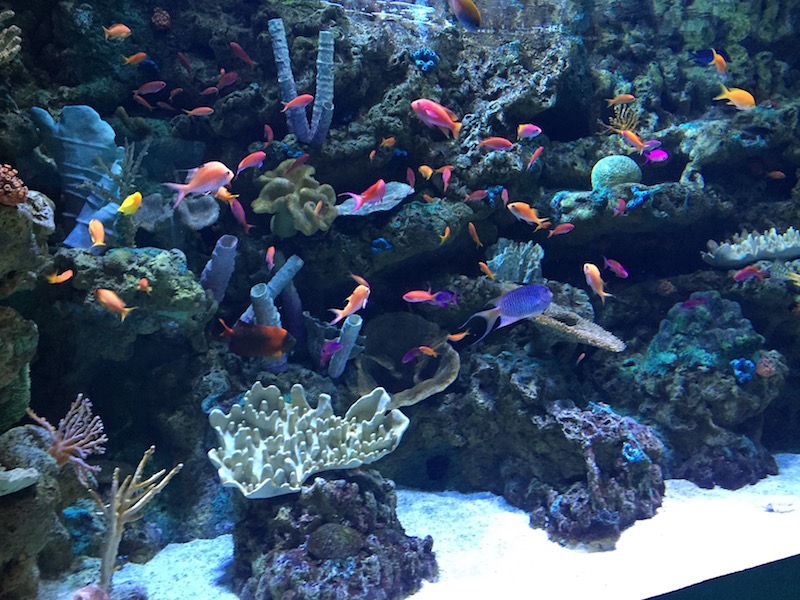
Add an inch of coral sand on the base, some rocks, a heater, filter, lid and light, and you are good to go. Saltwater aquariums really can be that simple. Clownfish are tank-bred so not taken from the ocean, and you are free to decorate the tank with artificial corals, maybe a background scene, and if you want to make your tank look more like the ocean, swap out the existing light for a marine spectrum blue light. Don’t overstock, don’t overfeed, conduct regular partial water changes, test the water, and you’ll have potentially years of fun and a new hobby.
Fish-only tank upgrade
If you are starting from scratch or want to keep larger marine fish, or more delicate species like Butterflyfish, you may be better off opting for an aquarium designed specifically for saltwater. This can come in the form of an All-In-One, with a large filter section built into the back, or a sump-based system, with all the filtration housed in a separate sump aquarium in the cabinet underneath. Sumps enable large equipment to be utilized like protein skimmers, ultraviolet sterilizers, media reactors, and roller mats, and all combine to produce much cleaner, healthier water for saltwater fish. Although you can use a simple external canister filter or hang-on-the-back filter for a simple saltwater setup, the vast majority of saltwater aquarium owners opt for AIO or a sump-based saltwater system, even for a fish-only tank.
What is a Reef Tank?
Reef tanks combine reef fish, corals, and other invertebrates like crabs and shrimp. With the right knowledge, equipment, and dedication you can create a miniature slice of living coral reef in your home aquarium that is bursting with life color and movement. Reef aquariums are the most popular type of saltwater aquarium and many saltwater aquarists become as fanatical or more about the corals, than the fish!
If you want to convert a freshwater aquarium to a reef aquarium, there is quite a bit of extra equipment you’ll need to buy and fit to your tank, and in some cases it may be better to sell off your old freshwater tank and start from scratch with either an All-In-ONe or a sump based system that is specifically designed for saltwater equipment and the goal of combining fish and corals. Here’s what you’ll need:
Why Corals need a better aquarium light
Corals are semi-solar powered, taking energy from algae cells within their tissue that photosynthesize in the sun. Coral reefs are situated in shallow sunlit waters near the equator, so the average freshwater fluorescent or LED striplight isn’t bright enough for their needs and you’ll need to upgrade. Remove the hood and light from a freshwater tank and fit a high-powered, reef-spec LED light fixture. These often clamp to the sides or the back of the tank or can be hung on wires from the ceiling.
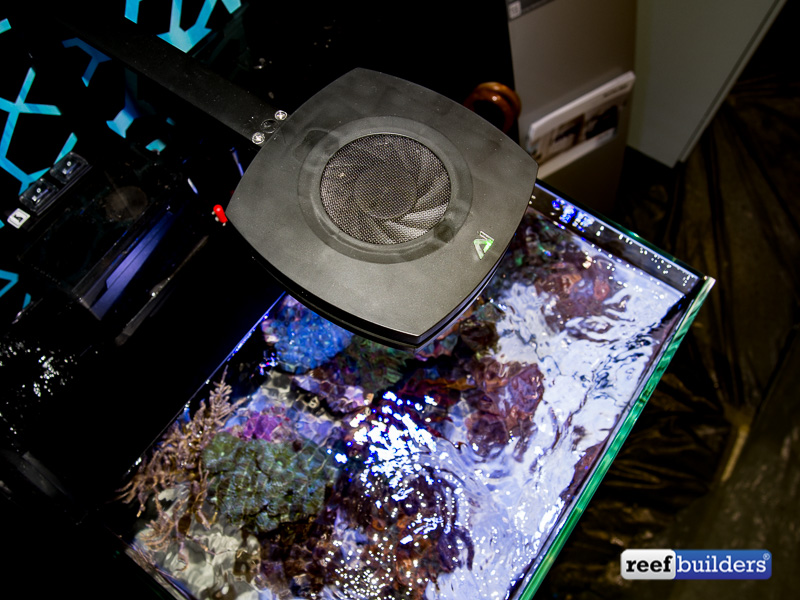
Why corals need extra flow
Freshwater power filters produce a jet of water but corals need a lot more water movement. Remove the old filter entirely and fit one or more wave pumps which will turn over the tank water volume fifty times per hour, so that’s a 2500gph wave pump for a 50-gallon tank. Good wave pumps use magnet mounts and can be controlled to produce random flow patterns like in the ocean.
Fit a protein skimmer
Instead of standard canister filters, for saltwater, we use a protein skimmer, a prefilter that uses tiny bubbles to attract dirt and collect it in a collection cup at the top. For a standard freshwater aquarium you’ll need either an internal skimmer or a hang-on-back model. For an AIO you’ll need a compact internal model and for a sump-based system, opt for a large, cone-shaped skimmer that can handle twice your aquarium’s total volume.
Chemical filtration
In reef tanks we need to control the amount of phosphate, so we either use phosphate removing resins in net bags or reactors, or we can add liquid phosphate solutions on a daily basis.
An auto top-off
When you take the lid of a saltwater aquarium it will start to evaporate, only the water will get saltier and saltier and your corals will die. Fit an auto top-off device to replenish the water lost via evaporation with fresh. Never top up evaporation with salt water.
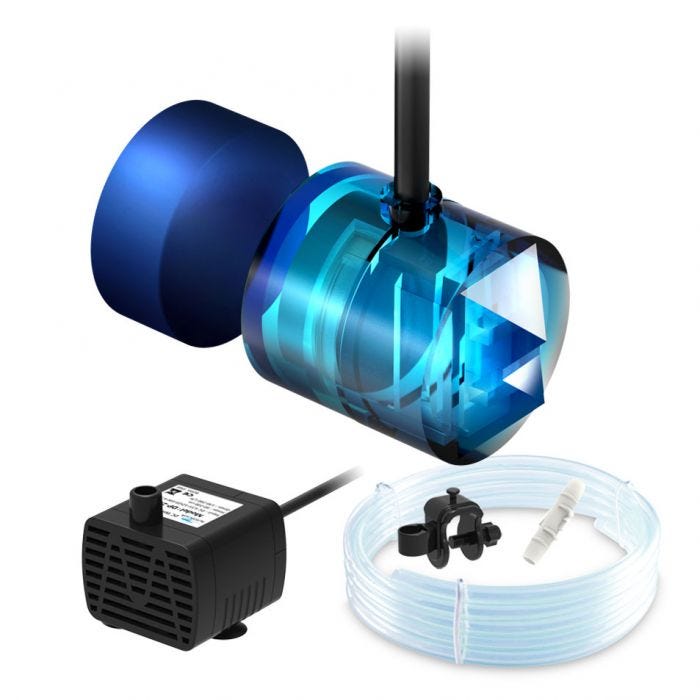
Marine Salt
You can either buy reef salt and a reverse osmosis machine, and make your own saltwater at home, or you can buy ready-mixed saltwater from your local marine aquarium store. Use a refractometer to measure the salt level in your aquarium and also make up or purchase some RO water for topping off. Don’t use table salt or tonic salt. It’s not the same.
Shopping list for freshwater to saltwater reef tank aquarium conversion
- Reef lighting
- Wave pump(s)
- Protein skimmer
- Phosphate remover
- Salt
- RO water
- Refractometer
- Coral sand
- Rock
- Auto Top-off
- Test kits
- Bacteria
- Heater (reuse)
Don’t reuse the following freshwater items
- The filter or filter media (unless going fish-only)
- The gravel
- Bogwood
- Air pump and airstones (unless going fish-only)
- Tapwater (unless going fish only,)
- Freshwater bacteria
- Rockwork
- Lighting
- Tonic salt
- Medications
- Lid/hood


